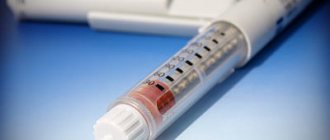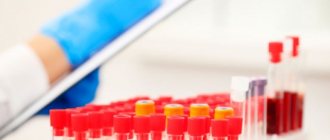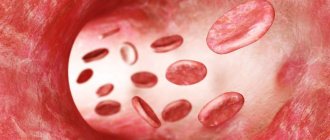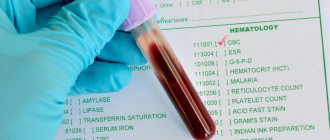Cholesterol is an organic compound found in cell membranes. Necessary for cell construction, synthesis of sex hormones, bile acids, and nutrient metabolism. It plays an important role in the human body, but sometimes causes significant harm.
There are two types of cholesterol in the blood: “good” (HDL) and “bad” (LDL). An increase in the concentration of the latter becomes the main cause of the formation of plaques in blood vessels, resulting in an increased risk of stroke and heart attack. High cholesterol levels are dangerous to health, so they need to be reduced. The most effective methods will be discussed in the article.
What causes cholesterol to rise?
Up to 80% of total cholesterol is synthesized by the human body from fats and only 20% comes to us with food. Moreover, this organic substance is contained exclusively in products of animal origin.
Until recently, it was the abuse of animal fats that was considered the main cause of high cholesterol, but as it turns out, this is not an entirely correct assumption. There are no high or low density lipoproteins in food; they become so during processing in our body. Therefore, metabolic disorders, endocrine diseases, diseases of the liver, intestines and adrenal glands are the main causes of high cholesterol.
At risk of increased LDL and early development of atherosclerosis are:
- patients with diabetes mellitus, obesity;
- people with endocrine diseases, for example, hypothyroidism, deficiency of sex hormones;
- women over 50 years of age, as well as men over 35 years of age;
- people with bad habits;
- patients with diseases of the kidneys, liver, pancreas;
- patients with a hereditary predisposition;
- women who have been taking hormonal medications for a long time.
People at risk should definitely undergo a blood cholesterol test. Because they are susceptible to heart and vascular diseases.
The risk of high blood cholesterol increases with predisposing factors. These include a sedentary lifestyle, bad habits, overeating, an abundance of unhealthy and fatty foods, deficiency of vitamin D, omega-3 polyunsaturated fatty acids in the diet.
High cholesterol in women is more often due to excess weight or low estrogen levels. Typically, this problem occurs during menopause. High cholesterol in men occurs at a younger age, after 35 years. The reason for this is bad habits and poor nutrition.
What you need to know about cholesterol?
The content of the article
Cholesterol is a lipoprotein. Lipoprotein is a combination of fats and proteins. Most of the cholesterol (80%) is produced in the liver, 20% of it enters the body with food. A person needs no more than 300 mg of cholesterol per day.
Cholesterol performs several important functions:
- responsible for the formation of cell membranes, maintaining their strength and elasticity;
- participates in the production of bile by the liver;
- participates in the synthesis of vitamin D;
- participates in the synthesis of sex hormones;
- protects the nervous system;
- participates in metabolic processes.
Normal cholesterol levels
On average, a healthy person contains about 2 g of cholesterol per 1 kg of body weight. If we talk about laboratory standards, then this is 3.6-7.8 mmol/l. However, when deciphering the results, it is important to understand what kind of cholesterol we are talking about. There are the following varieties:
- HDL – high-density lipoproteins, “good” cholesterol, which utilizes excess “bad” cholesterol;
- LDL - low-density lipoproteins, the main carriers of cholesterol in the blood, have a second name - “bad” cholesterol;
- VLDL are very low density lipoproteins that transport endogenous lipids.
A high level of the last two types is a predisposing factor for the development of atherosclerosis.
What cholesterol is considered high? Any (general, “good” or “bad”), if its concentration is above 5 mmol/l. If previously there were no limits for HDL, now scientists have come to the conclusion that its optimal level for men is 1.9 mmol/l, for women – 2.4 mmol/l. It is important that its concentration does not fall below 1.5 mmol/l, as this will cause an increase in LDL cholesterol.
If the level of “bad” cholesterol is within 5-6 mmol/l, then it is moderately elevated. If it reaches 7 mmol/l or more, it is life-threatening.
Studies have confirmed that extremely high cholesterol in men increases the risk of premature death by 106%. For women, this figure will be 68%. But the situation is no better in the case of extremely low HDL levels. An excessive decrease in “good” cholesterol also adversely affects health and increases the likelihood of early mortality.
What are LDL and HDL and their importance
The organic compound LDL is the main transport form of total cholesterol. Low-density lipoproteins transport cholesterol to organs and tissues. With the development of vascular disease, low-density lipoproteins become a source of cholesterol accumulation in the walls of blood vessels.
It is LDL that is associated with the risk of developing atherosclerotic plaques and coronary heart disease. HDL is responsible for transporting fats and cholesterol from one group of cells to another. The organic compound HDL is capable of transporting cholesterol from the vessels of the heart and arteries of the brain. HDL cholesterol is able to remove excess cholesterol from the body's cells.
The human body is capable of producing cholesterol on its own. The process of synthesis of an organic compound is carried out in the liver; only a small percentage of cholesterol can be produced in the skin and intestinal walls. In addition, the organic compound enters the body through food.
It is found in large quantities in:
- fatty meats;
- oily fish;
- butter;
- eggs;
- milk and margarine.
Problems with the thyroid gland can also increase cholesterol levels.
The function of HDL is to deliver cholesterol from the periphery of the body back to the liver for further processing.
Complications from high cholesterol
High cholesterol is dangerous because it increases the likelihood of developing the following diseases:
- atherosclerosis – accompanied by the formation of atherosclerotic plaques, decreased elasticity of vessel walls, and narrowing of the arteries;
- coronary heart disease – accompanied by narrowing of the coronary artery, which causes myocardial hypoxia and disrupts its functioning;
- hypertension - manifests itself as high blood pressure, against the background of which stroke, heart attack, heart failure and other serious complications are likely;
- stroke - an acute disorder of cerebral circulation as a result of blockage or rupture of a cerebral vessel;
- heart attack – death of a section of the heart muscle due to loss of blood supply.
Most of these diseases are known to be fatal.
High cholesterol at a young age causes early disability and mortality. Due to the increased concentration of LDL, the walls of blood vessels become less elastic, atherosclerotic plaques are deposited on them, which impede blood flow. As a result, blood clots form, which cause heart attack and stroke.
Signs of High Cholesterol:
- heart pain, angina attacks;
- heaviness, pain in the legs even after minor physical exertion;
- the appearance of blood clots with mild bleeding;
- yellow spots on the skin, mainly in the eye area, wen.
More severe symptoms of high cholesterol in men and women appear when LDL levels are at critical levels. This may be a pre-stroke or pre-infarction condition.
The earlier high cholesterol and its causes are identified, the more effective the treatment.
Complexes with this research
Women's check-up No. 1 38 studies for annual preventive examination 19,290 ₽ Composition
For those at risk of COVID-19 Diagnosis of diseases complicating the course of coronavirus infection 4,510 ₽ Composition
Advanced male anti-aging diagnostics Advanced monitoring of key indicators in men aged 40+ RUB 33,710 Composition
IN OTHER COMPLEXES
- Women's anti-aging diagnostics RUB 12,070
- Fitness monitoring 6,780 RUR
- Monitoring the diet of a nursing mother RUB 2,940
- Anti-aging diagnostics in postmenopause RUB 12,630
- Advanced women's anti-aging diagnostics RUB 28,680
How to treat high cholesterol
To reduce LDL levels, it is important to address the cause of high cholesterol and any predisposing factors. First, you should do a lipid profile. The examination shows how serious the increase is . High cholesterol is treated by a general practitioner or cardiologist. There is also a more specialized specialist - a lipidologist.
To reduce high cholesterol levels in the body, you must adhere to the following recommendations:
- Follow a diet. Namely, reduce the consumption of animal fats, “fast” carbohydrates, and foods with trans fats. Nutritional correction reduces LDL levels by 10-15%.
- To refuse from bad habits. Moreover, not only active smoking, but also passive smoking is detrimental to health.
- To live an active lifestyle. It is useful to walk in the fresh air and set aside time for physical exercise. Exercise for at least 30-60 minutes. in a day.
- Control your weight. Fat deposits in the abdominal area are especially dangerous.
- Control blood sugar levels. This recommendation applies to patients with diabetes, as well as people who are predisposed to this disease.
- Cure endocrine diseases, normalize hormonal levels.
Sometimes statins are needed to treat high cholesterol. They produce an immediate effect, but scientists are increasingly talking about their shortcomings. Drugs in this group do not have a selective effect, they reduce everything - both “bad” and “good” cholesterol, and also negatively affect the functioning of the liver. However, their harm is less than the complications of critically high LDL levels.
Characteristics of the LDL molecule
LDL (low molecular density cholesterol) is an metabolic intermediate process of lipoproteins with very low molecular density and the separation of triglyceride molecules from the VLDL molecule.
The composition of low-density lipoprotein molecules includes a component - apolipoprotein B100, which is the main connection with the cells of the body, which allows LDL molecules to enter, delivering cholesterol into cell membranes.
This fraction of lipids is synthesized in the body with the help of the main lipid enzyme lipoprotein lipase and with the help of hepatic lipases in liver cells.
The core of the low-density LDL molecule consists of 80.0% cholesteryl esters (fats), and the low-density lipoprotein molecule also includes:
- 21.0% protein compounds;
- 4.0% triglyceride molecules;
- 41.0% essential cholesterol;
- 11% free cholesterol molecules.
Core of the low-density LDL molecule
Tasks in the body
The task assigned to low molecular density lipoproteins is the delivery of cholesterol to the cell membranes of the peripheral parts of the human body and the bloodstream system.
With significant construction of the cell membrane, LDL molecules are consumed, so its concentration in the blood begins to decrease.
The body also needs cholesterol molecules for many processes:
- To give membranes elasticity and strengthen them;
- To increase the protective functions of the body and the functioning of the immune system;
- For the production of steroid hormones and other sex hormones;
- To convert sunlight into vitamin D;
- To protect the nervous system and nerve fibers from the effects of stress and overexcitation.
Low molecular density lipoproteins bring great benefits to the body, but if their concentration in the blood is within the normal range.
LDL provides great benefits to the body
Products that need to be limited
I would like to say right away that it is impossible to recover with diet alone. Treatment for high cholesterol is complex. However, some dietary restrictions are simply necessary.
If your LDL level is high, limit your consumption of the following foods:
- meat - beef, veal, lamb, pork;
- bird – duck, goose;
- lard, animal by-products;
- sausages, smoked meats;
- canned food;
- high fat dairy products;
- seafood - caviar, shrimp, oysters;
- margarine, mayonnaise;
- chicken yolk;
- coffee;
- sugar, flour products;
- fast food, convenience foods, chips, crackers and other unhealthy foods;
- salt (it prevents the breakdown of fats).
The consumption of fried foods is also limited, but it is impossible to completely remove all animal fats from the diet. If the body feels a lack of cholesterol coming from outside, it will increase its synthesis. When planning a diet, it is important to consult a nutritionist.
Diet for patients
To reduce the elevated LDL index, diet table No. 10 is used.
This anti-cholesterol diet is selected individually, but there are general rules for its use:
- Consume large amounts of plant-based cereal products and vegetable oils;
- Limit the consumption of foods with cholesterol (with animal fat);
- Fermented milk products should be low-fat, and you can also eat cheeses with a low percentage of fat;
- The meat should be of low-fat varieties - chicken, turkey, lean young veal and rabbit;
- Introduce sea fish into your diet, which is rich in Omega-3 and vegetable oils and nuts;
- Use vegetables, greens and fruits in the menu as much as possible;
- Avoid sweets and starchy foods;
- Reduce daily salt intake to 2.0 grams;
- Meals should be at least 6 times a day;
- Dishes should be in small portions;
- Don't forget to drink plenty of clean water.
Drink more clean water
When is a blood test (study) prescribed?
A biochemical blood test for LDL cholesterol, being part of a “regular” lipid profile, is primarily prescribed to adequately assess the risks of developing atherosclerotic CVD (i.e., cardiovascular disease). Since, in comparison with all other fractions of cholesterol, it is LDL cholesterol, being in excess, that is considered “undesirable” (or “bad”). Since its “excess”, (gradually) accumulating in the walls of blood vessels, forms “atherosclerotic plaques”
. These formations, somewhat similar to “growing mountains,” not only interfere with normal blood flow, but can also clog blood vessels. And this is fraught with a heart attack, gangrene of the limbs or a stroke.
Next, the doctor decides on the best method of treatment (depending on the borderline
or
a high
amount of LDL cholesterol in the blood plasma, as well as the presence of
other risk factors - they are described just BELOW
).
And, accordingly, controls its effectiveness. The most effective treatment options are some lifestyle changes (giving up bad habits, special diets and exercise therapy/physical therapy). As well as taking lipid-lowering drugs (ATC code C10), for example, STATINS
.
When prescribing the latter, treating specialists will be sure to monitor their effectiveness using a repeat blood test (LDL cholesterol) after 4-12 weeks
(from the start of drug therapy), and then
every 3-12 months
.
MAIN RISK FACTORS
development of CVD (except for high levels of LDL cholesterol):
- smoking (especially “red” tobacco products with a high content of nicotine and tar);
- overweight (with a BMI of 25 and above, according to WHO) or obesity (with a BMI of 30 and more), find out your BMI using the ONLINE CALCULATOR
; - “unhealthy” diet (with an excess of trans fats, animal fats and other foods that increase “bad” cholesterol
); - inactive / “sedentary” lifestyle or physical inactivity (“sedentary work” or other restrictions on physical activity);
- the age of the person (men – from 45 years and older, women – from 55 years and more);
- hypertension/arterial hypertension (high blood pressure syndrome ≥ 140/90 mmHg);
- family history of premature CVD (in 1st degree relatives, i.e. in fathers - up to 55 years old and mothers - up to 65 years old);
- Previous experiences – heart attack or ischemic heart disease (coronary heart disease);
- Type 2 diabetes or pre/diabetes.
NOTE:
HDL cholesterol levels - from 1.55 mmol/l (60 mg/dl) and above, according to the provisions of NCEP (2002), are considered a “negative risk factor”, which makes it possible to exclude from the total one of the above/listed risk factors .
Preventive blood tests for adult men and women
In many foreign countries, a biochemical blood test for LDL cholesterol levels (LDL-C) may be prescribed (as part of a lipid profile) during a mandatory/regular medical examination. According to NCEP recommendations (ATP III), all adult men and women without CVD risk factors (listed ABOVE) should undergo such tests every 4-6 years
.
At the same time, for people who do have 1 or more major risk factors, a blood lipid profile (fasting) can be prescribed MORE FREQUENTLY (at the discretion of the “family doctor”). In addition, it is always prescribed (by the way, both here and in foreign countries) when a general blood test (finger prick) shows elevated cholesterol (C). That is, doctors need it in order to check: is the level of total cholesterol (i.e. Total Cholesterol) high - precisely because of the increased amount of LDL cholesterol?
Blood test for LDL cholesterol for preventive purposes for adolescents and children
For example, in the USA and Canada, according to the recommendations of the AAP (American Academy of Pediatrics), children undergo a lipid profile at 9-11 years of age
(i.e. during the transition to adolescence).
And one more time, as boys and girls, from 17 to 21 years
.
Of course, earlier (and more frequent) comprehensive studies of the blood lipid spectrum can be prescribed - both for children and adolescents who have an increased risk of developing CVD. At the same time, they are exactly the same as in adults. Statistics have shown that the most common problems (from this list) are premature cardiovascular diseases in their parents (fathers and mothers), as well as diabetes, hypertension and obesity. In addition, even very young children with increased risks of CVD should also undergo a lipid profile between the ages of 2 and 8 years
. A child under 2 years old is still too young for such an analysis.
Pathological reasons for the increase
There are other causes of elevated low-density lipoprotein (LDL) levels. Mostly related to diseases.
Diabetes
A chronic, serious disease in which the level of glucose in the body increases. Usually associated with a condition of the pancreas. When little insulin is produced. On the other hand, a situation is possible in which the tissues are simply insensitive to this substance.
Both options are equally dangerous. The disease is accompanied by critical metabolic disorders. And that's the minimum. Low-density lipoproteins in diabetes constantly increase, so therapy is carried out systematically. For many years.
For immediate treatment, statins are prescribed, as well as fibrates as needed. As well as nicotinic acid.
But this is not enough. Insulin is used to stop attacks. In addition, a strict diet is indicated. Avoid sweets and sugar from your diet, and don’t get carried away with starch.
Herbal products are required. It is necessary to reduce body weight. The issue is resolved under the supervision of a competent endocrinologist.
Liver pathologies
Diseases in which an organ stops working as it should. Be it hepatitis, inflammation or cirrhosis (that is, death of the tissues of the largest gland).
Since the liver is primarily responsible for fat metabolism, all functions begin to be disrupted, including lipid processing.
What is the therapy? It is necessary to prescribe hepatoprotectors. Karsin, Essentiale, Phosphogliv. These are special means that prevent organ destruction.
The main diagnosis is being corrected. For example, hepatitis. Drugs are used. Next, the patient’s condition is monitored over time. Check how the prescribed course works.
Treatment is the prerogative of the hepatologist. If there is no such doctor within reach, a consultation with a gastroenterologist is indicated.
Cholecystitis
Inflammation of the gallbladder. Accompanied by impaired bile production. This substance is involved in the processing of fats.
If there is not enough compound after eating, problems with lipid storage begin. At a minimum, over-deposition occurs. When there is too much fat. This means that the concentration of low-density lipoproteins increases. It is very dangerous.
Treatment is carried out on site. Necessary choleretic drugs. Allohol and others. They help the substance to be evacuated faster through special ducts. This means there will be no stagnation.
Attention:
The drug is not used for cholestasis with inflection and organic disorders of the gallbladder. His anatomical disorders.
Then, if necessary, diet therapy is used. A diet high in protein is prescribed.
Plus, they review the amount of food they eat per day. There should be about 5-6 of them so that each time the portion fits in the palm of your hand. This will reduce the load on an organ that is already out of order.
Insufficient production of thyroid hormones
The so-called hypothyroidism. This small organ, along with the pituitary gland, can be called the “conductor” of the entire endocrine system.
All deviations in the functioning of the thyroid gland immediately lead to an increase in the concentration of low-density lipoproteins, therefore, the amount of cholesterol also increases. Depending on the degree of violation, it is very significant.
Attention:
This is a threatening condition fraught with atherosclerosis.
Therapy is carried out under the supervision of an endocrinologist. Possibly in a hospital if there are life-threatening complications.
Special iodine preparations are prescribed. Also a diet high in this substance.
A huge role is played by correcting the primary cause. Often thyroid diseases are secondary. Caused by other factors. For example, problems in the functioning of the pituitary gland, etc.
Adrenal gland disorders
Diseases in which the concentration of adrenaline, cortisol and other substances is disrupted. They indirectly participate in the normal synthesis of LDL and correction of the concentration of low-density lipoproteins.
As soon as the amount of hormones decreases, problems begin. There can be many reasons: for example, Addison's disease or surgery. Correction is carried out immediately. Under the supervision of an endocrinologist.
Treatment is conservative. Substitute drugs are prescribed. Hormonal agents. If possible, artificial stimulation of the adrenal glands is performed. To achieve restoration of their functions.
The process is not fast. Complete rehabilitation requires at least 2-3 months. Often much more. It all depends on the primary factor.
Atherosclerosis
It is quite difficult to say exactly what is the cause and what is the effect. The essence of the pathological process is the deposition of cholesterol on the walls of the arteries.
The vessels cannot bear such a load. Local and even general pressure increases, the nutrition of body tissues is disrupted.
Therapy is carried out under the supervision of an endocrinologist. Prescribed drugs of the statin group. If the plaque becomes calcified and inorganic salts are deposited, there is no point in such medications. The formation is removed surgically. Through minimally invasive intervention.
If LDL is elevated, this means that normal metabolism is disrupted (slowed down). Usually there are two reasons. The first depends on the patient himself. For example, he doesn't eat well. And the second concerns the pathological process. Primary in relation to atherosclerosis.
The result is always the same. If left untreated, dangerous complications develop. Up to stroke, heart attack, arterial aneurysms.
Treatment for Low Cholesterol
What to do if low-density cholesterol is low. After hypocholesterolemia has been confirmed by a biochemical blood test, you should immediately make an appointment with a specialist in the field of endocrinology. He will help you accurately determine the cause of low cholesterol and prescribe appropriate treatment.
Important! If your readings are low, self-medication is unacceptable!
How to increase cholesterol in the blood? First of all, you will have to make adjustments to your diet and follow the recommended dietary intake. The daily menu should consist of foods that help increase cholesterol levels, namely:
- Dutch hard cheese;
- caviar and beef brains;
- sea fish;
- flax and pumpkin seeds;
- eggs;
- nuts;
- seafood;
- beef kidneys and liver;
- butter.
The doctor's recommendations regarding nutrition must be strictly followed by the patient, otherwise the effectiveness of therapy will be minimal. In no case should you saturate your diet with too fatty foods. As a rule, this leads to a sharp increase in bad cholesterol, which increases the risk of atherosclerosis.
Greens must be present on the dining table in unlimited quantities. Dill and parsley are considered especially useful. It is better to start the morning with a nutritious salad consisting of bell peppers, fresh carrots, white cabbage, celery, dill, and olive oil. If you want a heartier breakfast, you can serve boiled beef or turkey with the salad.
Quite often, to normalize the functioning of the liver, experts advise cleaning the liver using various recipes. In cases where the patient does not suffer from serious pathologies, normalization of cholesterol occurs by changing the diet. In addition, you will have to completely give up alcohol-containing products and smoking. Instead of harmful addictions, experts advise starting sports.
If you have hypocholesterolemia, you will need to review your diet
Decoding LDL cholesterol indicators
What do the results of a lipid profile (relative to the level of LDL cholesterol in the blood plasma) mean - are they good or bad? What do our doctors use to make their final decision? At the moment, both foreign doctors and domestic specialists use the “old” provisions of the NCEP (National Cholesterol Research Program) commission from 2002 to assess lipid levels (and prescribe treatment). Even despite the newer recommendations of the AAC (American College of Cardiology) and AHA (American Heart Association) from 2013. Which specific people should receive cholesterol-lowering therapies (particularly medications) based on age, CVD, diabetes, gender, race, blood pressure, and elevated LDL-cholesterol (LDL-C).
However, this does not mean that everything is outdated, it’s just that Americans are very careful! Therefore, due to the fact that many of the principles of the new guidance remained controversial, it was decided to return to the NCEP recommendations (ATP III). Until pundits fully understand many things, including the ASCVD (Atherosclerotic Cardiovascular Disease) calculator, used to estimate the “10-year risk of developing atherosclerotic CVD. On the results of which, in fact, the fresh recommendations were based. Although, they still began to do some things in a new way. That is, if previously clinics took into account the “target values” of LDL cholesterol (LDL-C) to reduce the risks of atherosclerotic CVD, then since 2013, many experts rely on their percentage reduction. According to recommendations from the AAC and AHA.
LDL cholesterol levels for adults
So, according to the provisions of NCEP (ATP III) for adult men and women (without CVD risk factors), LDL cholesterol levels are estimated as follows:
- less than 100 mg/dl (2.59 mmol/l) – optimal level;
- 100-129 mg/dl (2.59-3.34 mmol/l) – normal / close to optimal;
- 130-159 mg/dl (3.37-4.12 mmol/l) – elevated / borderline values
- 160-189 mg/dl (4.15-4.90 mmol/l) – elevated/high values;
- more than 189 mg/dL (4.90 mmol/L) is a very high (dangerous) level.
More detailed information about the norms of LDL cholesterol (separately for women and men) depending on AGE is presented BELOW - in separate tables.
You may be interested in: cholesterol standards (IN THE TABLE) IN ALL its fractions
LDL cholesterol indicators for children, adolescents and young people
According to the AAP (American Academy of Pediatrics), LDL cholesterol levels for children and adolescents (without CVD risk factors) aged 2 to 17 years are estimated as follows:
- less than 110 mg/dL (2.85 mmol/L) is an acceptable level;
- 110-129 mg/dl (2.85-3.34 mmol/l) – elevated/borderline values;
- more than 130 mg/dl (3.36 mmol/l) – high level.
Also read (link): CHOLESTEROL IS INCREASED IN A CHILD, WHAT SHOULD BE DONE?
Doctors consider LDL cholesterol indicators for young people (i.e. for boys and girls aged 17 to 21 years) as follows:
- less than 120 mg/dL (3.10 mmol/L) – acceptable level;
- 120-159 mg/dl (3.10-4.11 mmol/l) – elevated/borderline values;
- more than 160 mg/dl (4.12 mmol/l) – high level.
LDL cholesterol (LDL-C) - norm in women table (by age)
Below (in the table) the norms of LDL-C / LDL cholesterol (low-density lipoprotein cholesterol) in blood plasma in girls, young women and adult women are presented by age.
| Age (girls/girls/women): | Norm LDL cholesterol (mmol/l) | LDL-C norm (mg/dL) |
| children from 5 to 10 years old | 1.76 – 3.63 | 68.1 – 140.4 |
| 10 – 15 | 1.76 – 3.52 | 68.1 – 136.1 |
| 15 – 20 | 1.53 – 3.55 | 59.2 – 137.3 |
| 20 – 25 | 1.48 – 4.12 | 57.2 – 159.3 |
| 25 – 30 | 1.84 – 4.25 | 71.1 – 164.3 |
| 30 – 35 | 1.81 – 4.04 | 70.0 – 156.2 |
| 35 – 40 | 1.94 – 4.45 | 75.0 – 172.1 |
| 40 – 45 | 1.92 – 4.51 | 74.2 – 174.4 |
| 45 – 50 | 2.05 – 4.82 | 79.3 – 186.4 |
| 50 – 55 | 2.28 – 5.21 | 88.2 – 201.4 |
| 55 – 60 | 2.31 – 5.44 | 89.3 – 210.3 |
| 60 – 65 | 2.59 – 5.80 | 100.1 – 224.3 |
| 65 – 70 | 2.38 – 5.72 | 92.0 – 221.2 |
| over 70 years old | 2.49 – 5.34 | 96.3 – 206.5 |
Also read (link): about CHANGES IN CHOLESTEROL NORMAL IN WOMEN ACCORDING TO AGE
Symptoms
It is impossible to determine hypocholesterolemia by external manifestations. To determine cholesterol levels, the patient must take a biochemical blood test performed on an empty stomach. In cases where you cannot visit the hospital for some reason, you should pay attention to your own well-being.
Symptoms such as lack of appetite for a long time, decreased sensitivity, systematic weakness, fatigue, and the presence of fatty loose stools can signal low cholesterol.
Enlarged lymph nodes, rapid mood swings, and decreased sexual activity appear. The listed symptoms may indicate hypocholesterolemia, so it is important to urgently consult a doctor and get tested!









